
|
Caspar Vopel |
GLOBUS VON VOPELIUS, KÖLNNISCHES STADT-MUSEUM: KSM 1984/447, A Manuscript Celestial Globe, 1532
|
Caspar Vopel
GLOBUS VON VOPELIUS, KÖLNNISCHES STADT-MUSEUM: KSM 1984/447
A Manuscript Celestial Globe, 1532

Dal saggio di EllY Dekker del 2010 riproduco di seguito la descrizione del globo celeste manoscritto del 1532 di Caspar Vopel ora depositato presso il KÖLNNISCHES STADT-MUSEUM con il codice KSM 1984/447
http://www.atlascoelestis.com/Vopel%202010%20base.htm

Caspar Vopel (1511–1561) was born in Medebach, a small town not far from
In
1526 he entered the
Vopel became a well-known cartographer and was also active as an instrument
maker: (3)
Although his world map and his maps of Europe and the
This paper aims to fill in the gap by describing Vopel's celestial globes and
maps, with special attention given to innovations introduced on their initations
and derivatives.
In
discussing Vopel's celestial cartography I follow existing conventions and
denote constellations by their Latin names. Subgroups, such as the Pleiades, are
referred to by their English names. Stars are identified in one of two ways: by
modern convention or by the serial number from its Ptolemaic constellation. Thus
Regulus, the brightest star in Leo, is denoted as α Leo or Leo 8. Unformed stars
of a constellation, listed by Ptolemy separately after the ‘formed’ stars
because they are located outside the imaginary constellation figure, are
numbered as 1e, 2e and so on, with ‘e’ standing for external. Thus the first of
the unformed stars of Leo is Leo 1e, the second Leo 2e. (5)
The lasting merit of Vopel's printed globe and maps—or so it appears in retrospect—is the images of two star groups, Antinous and the Lock of Hair, better known as Coma Berenices, neither of which had previously been represented graphically. Their introduction on Vopel's printed globe of 1536 started a process by which the two groups came to be recognized as individual constellations. Since then, many other new constellation figures have been added to the celestial sky, sometimes for unformed stars in the northern hemisphere, at other times for stars newly recorded in the southern sky during voyages of exploration. The impact of Vopel's initiative raises a number of questions including why Vopel introduced the images of Antinous and Coma Berenices and what the reaction of his contemporaries was. Before dealing with these questions, however, we need to look at Vopel's various undertakings in celestial cartography.
https://www.kulturelles-erbe-koeln.de/documents/obj/05741337
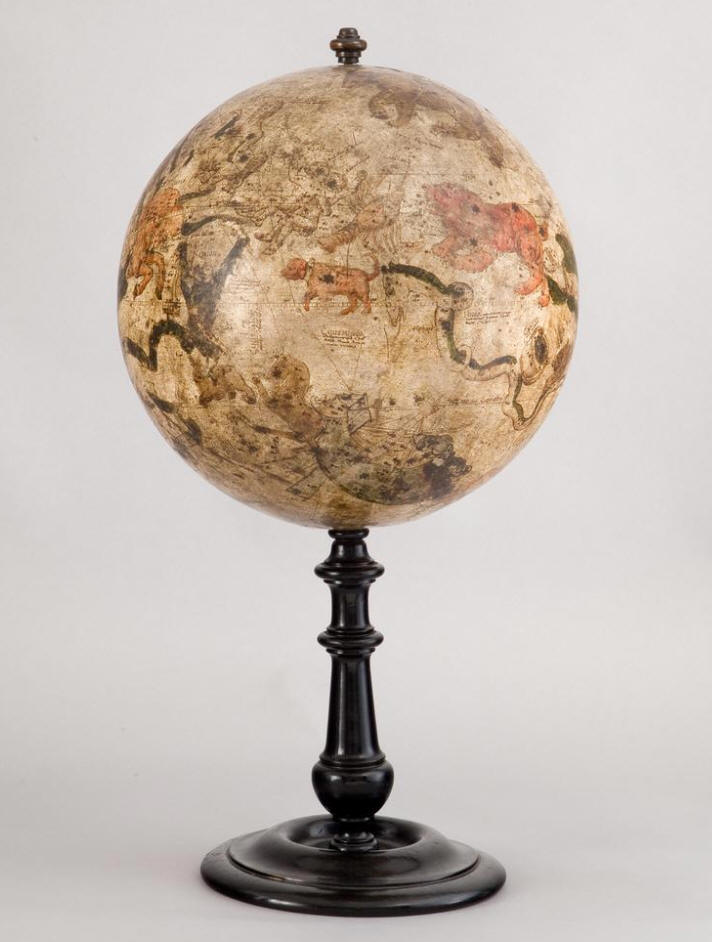
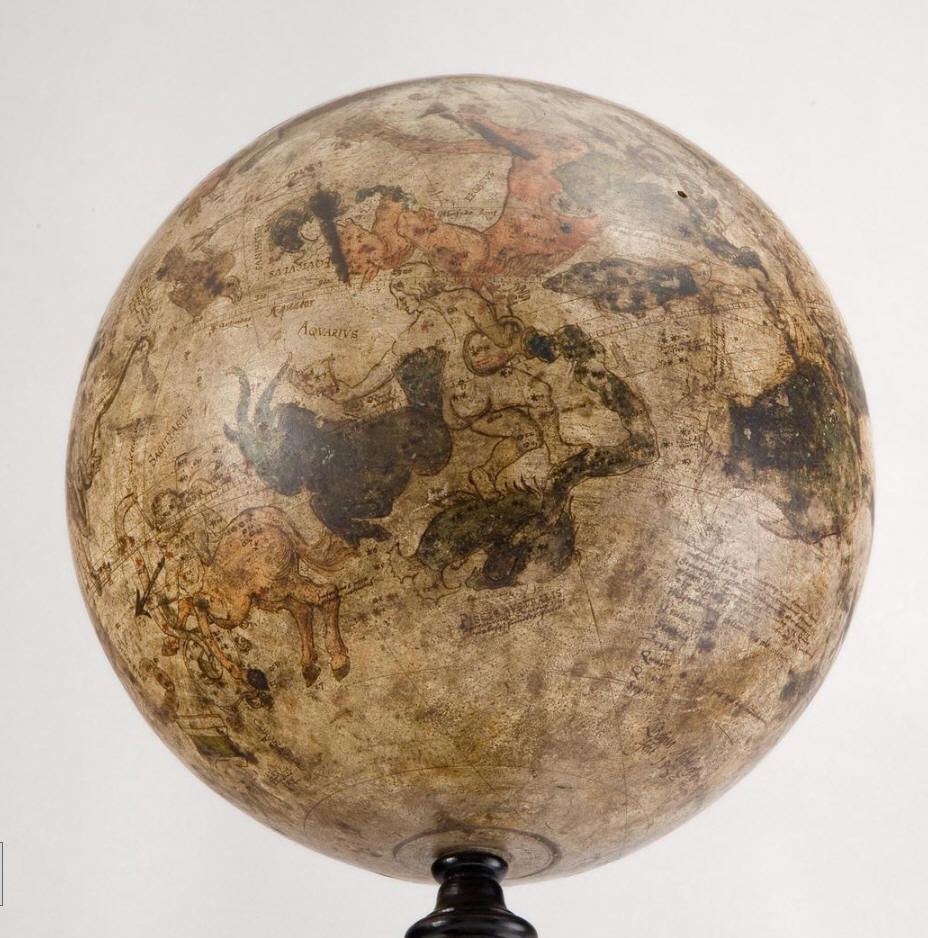
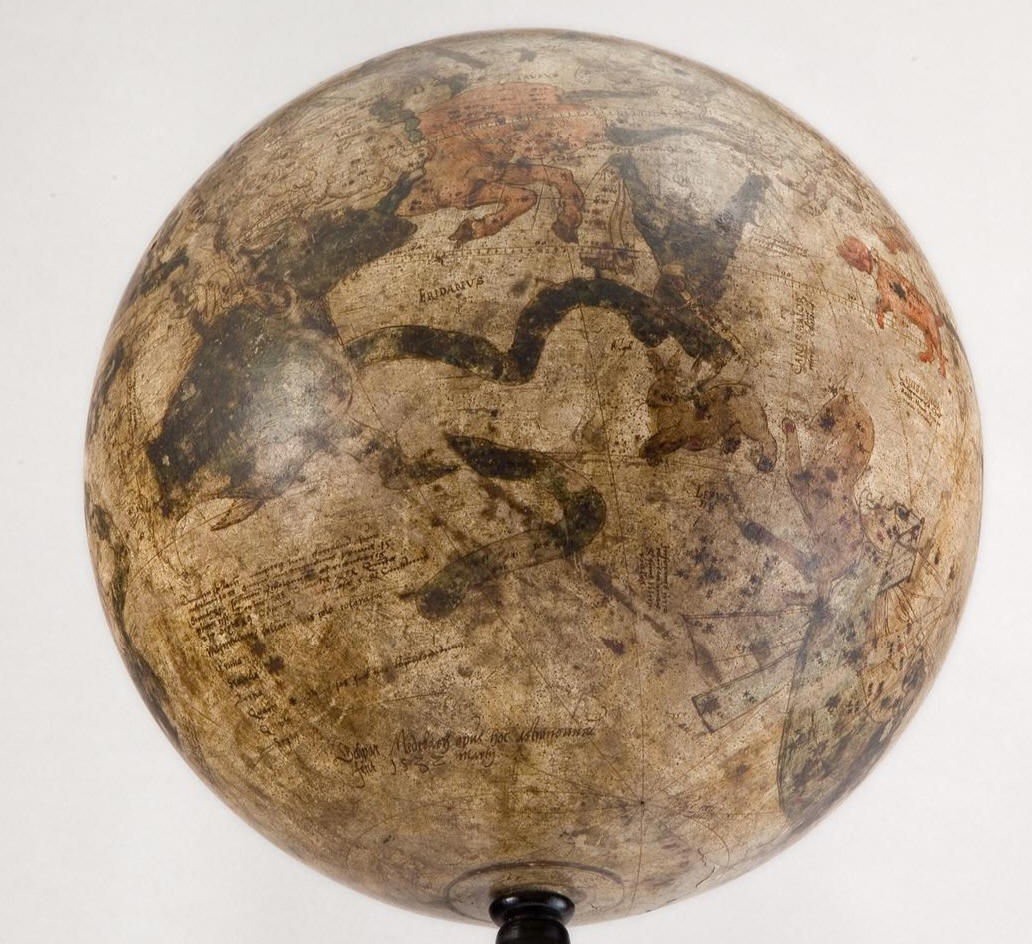
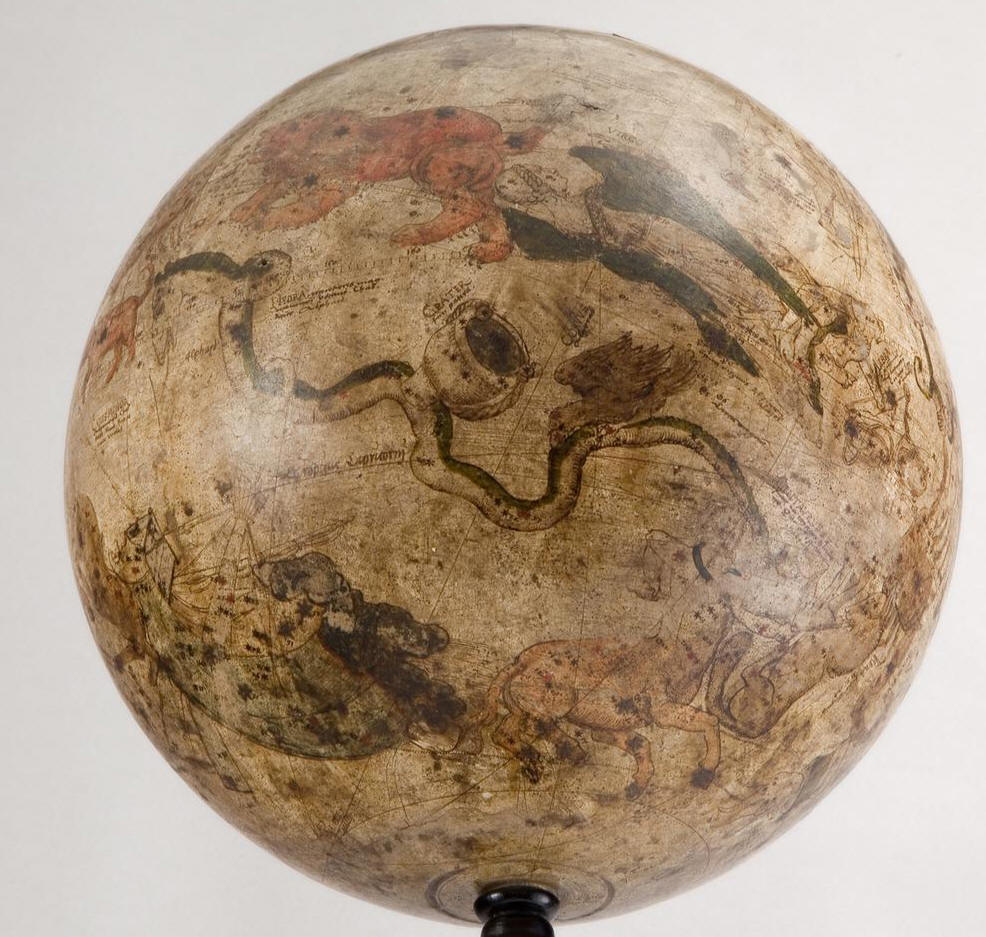
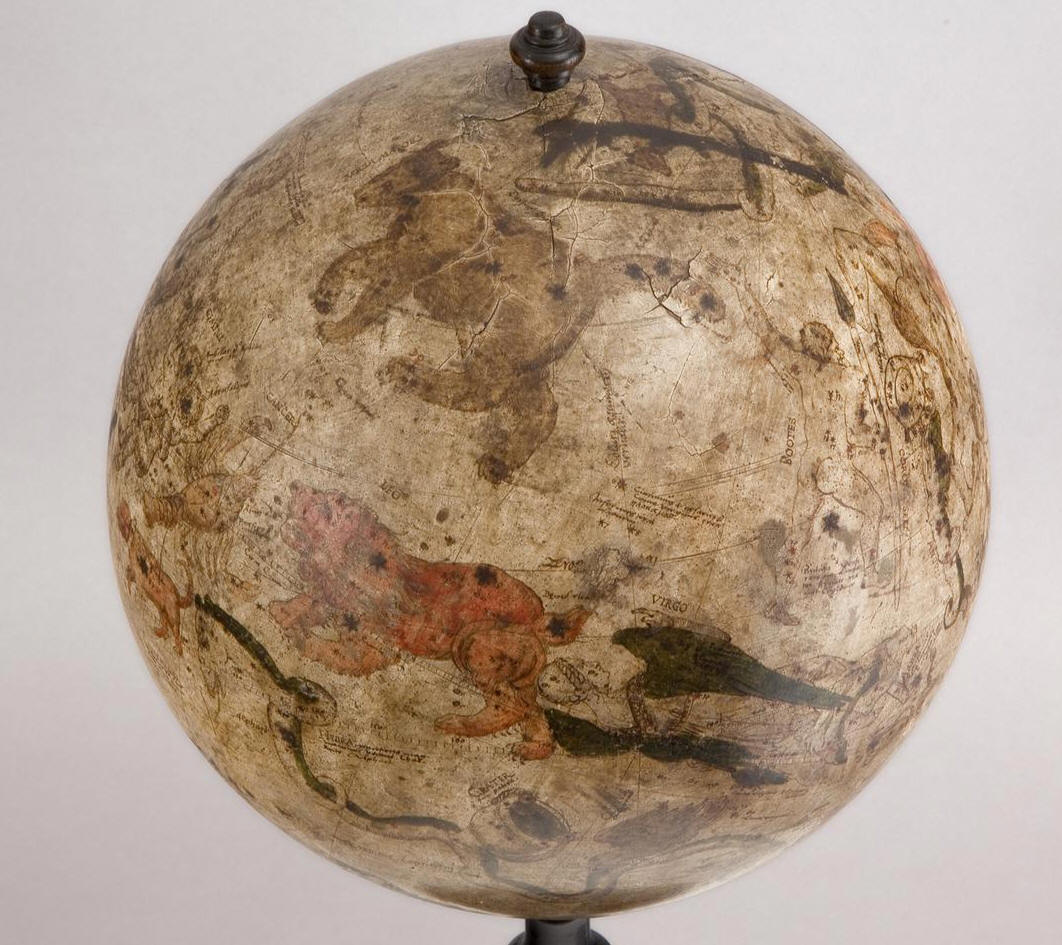
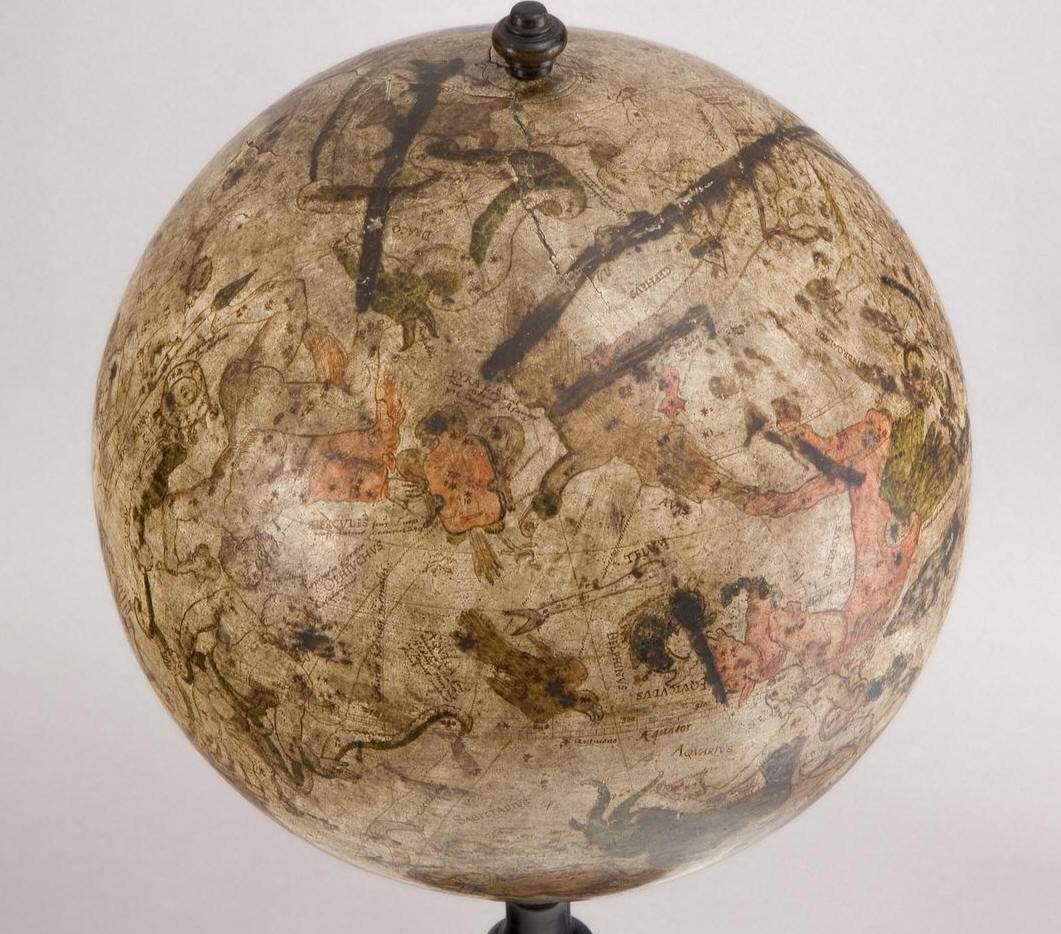
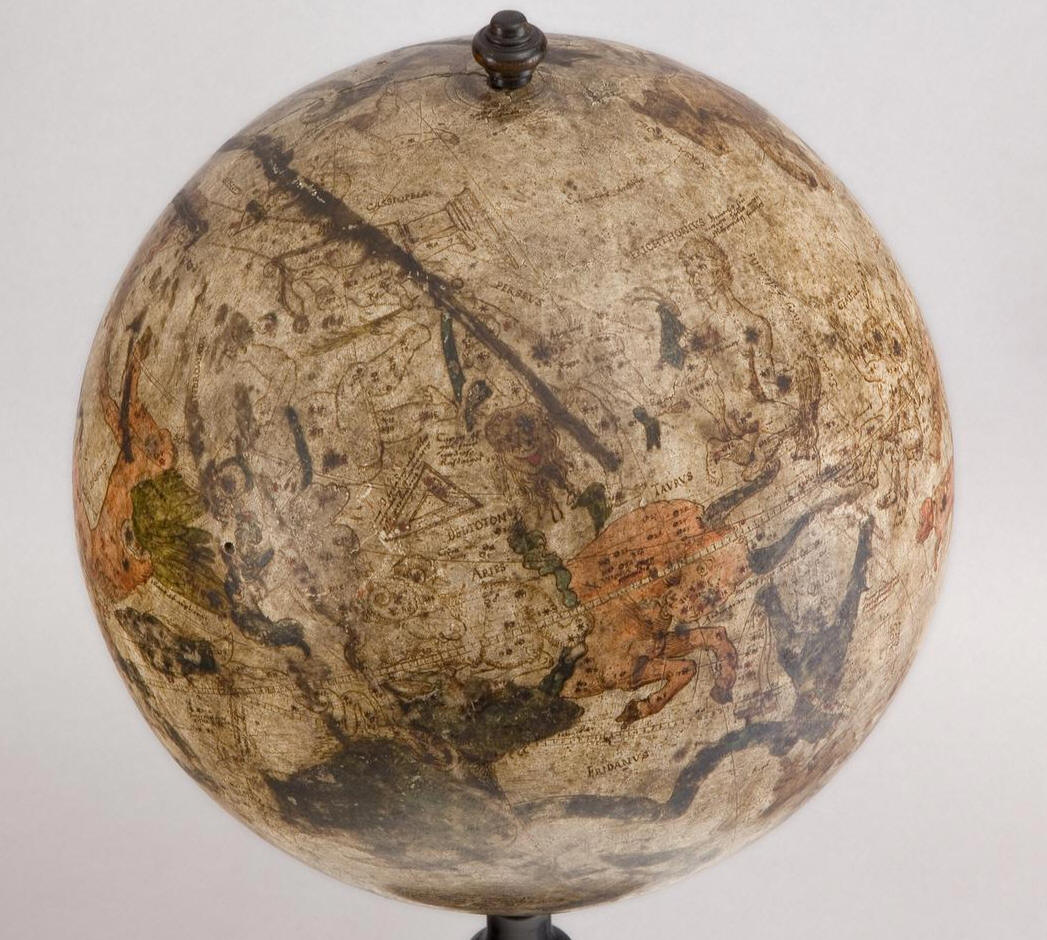
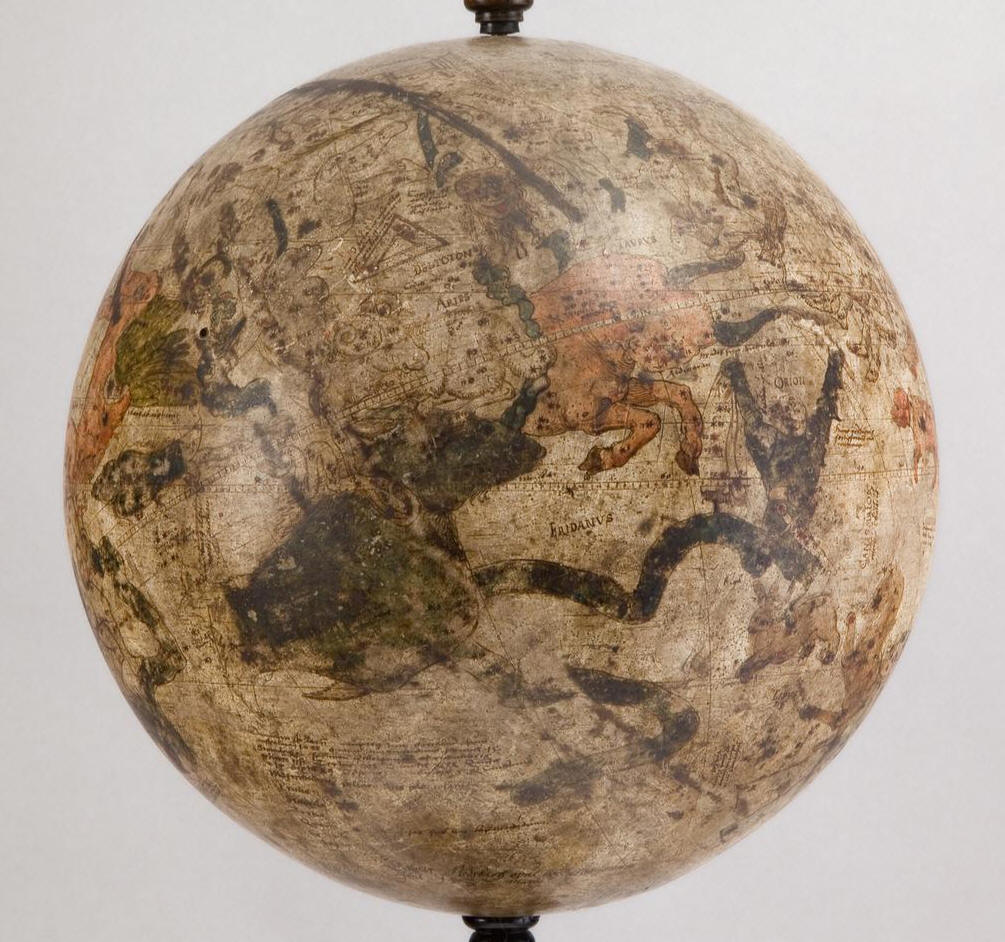
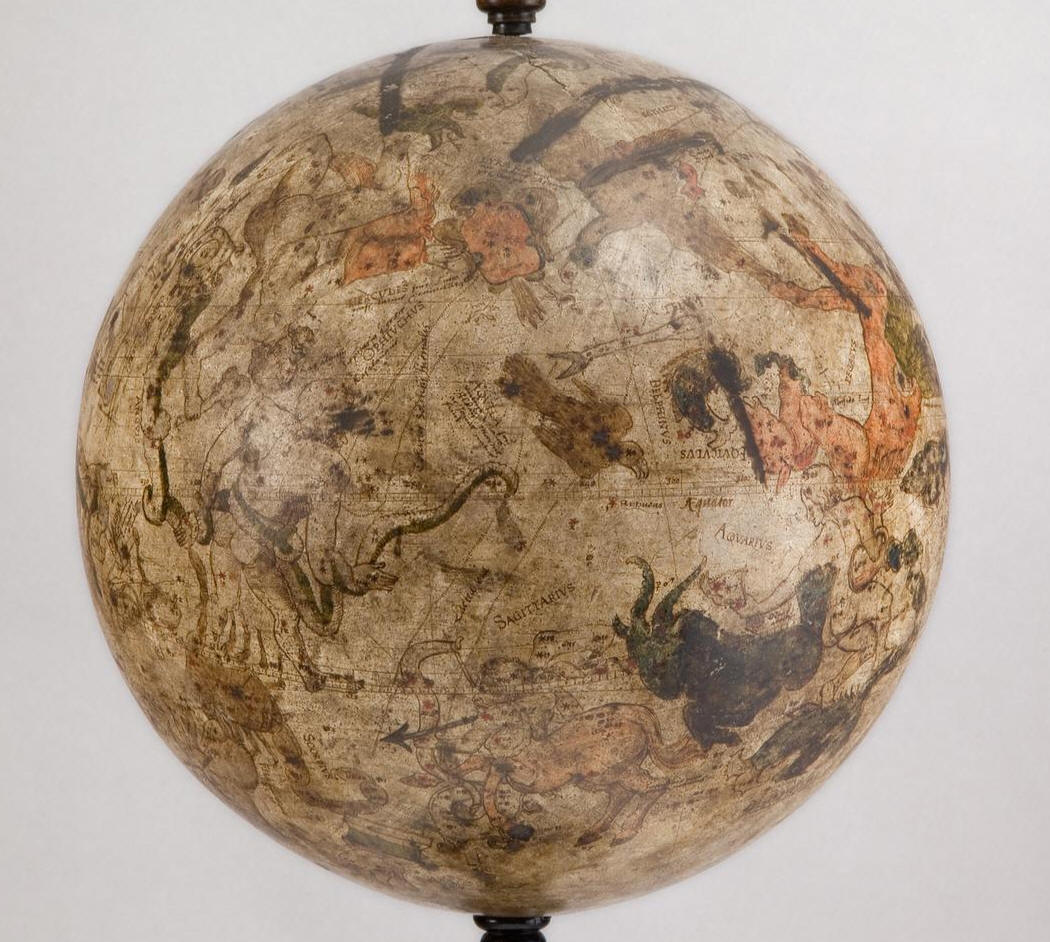
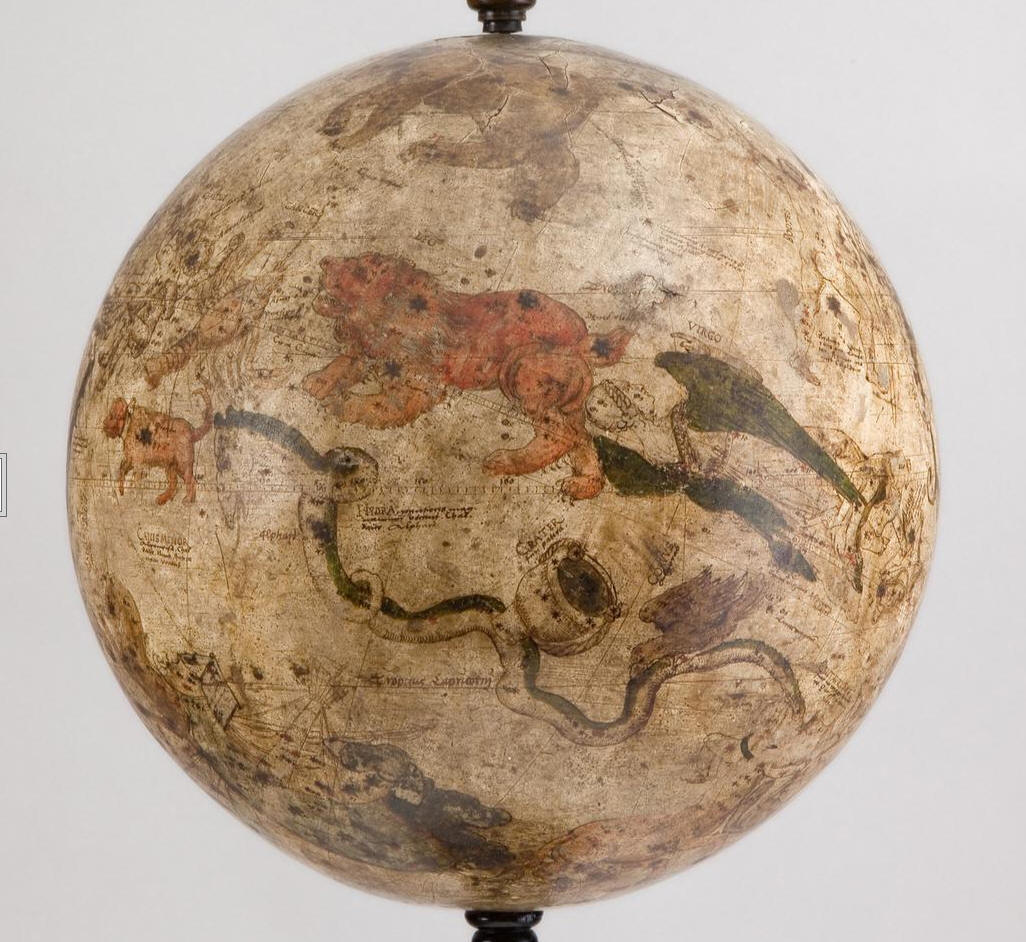
Vopel's earliest surviving piece of work is his manuscript celestial globe of
1532, now in the Kölnisches Stadtmuseum. (6)
It
has a diameter of some
Like all globes made in the Renaissance, Vopel's presents the 1025 so-called
fixed stars described in the star catalogue in Ptolemy's Syntaxis mathematica,
a second century ad astronomical work devoted to
the motions of the wandering stars, or planets. (8)
The fixed stars, discussed in books VII and VIII, serve in this context as a
reference grid for locating the planets. The star catalogue is organized as
follows:
For each star (taken by constellation), we give, in the first section, its
description as a part of the constellation; in the second section, its position
in longitude, as derived from observation, for the beginning of the reign of
Antoninus…; in the third section we give its distance from the ecliptic in
latitude, to the north or south as the case may be for the particular star; and
in the fourth, the class to which it belongs in magnitude. (9)
The recorded star positions are valid for the epoch 137 ad,
the beginning of the reign of Antoninus. Since precession causes the equinoxes
(the points of intersection between the ecliptic and the equator) to drift
slowly with respect to the stars in the course of time, the stellar longitudes
have to be adapted for later times.
Ptolemy's Syntaxis mathematica was transmitted to the Latin West through
Arabic translations circulating in Muslim Spain. The Latin translation made from
the Arabic around 1175 by Gerard of Cremona became known in the Middle Ages as
the Almagest; it was first printed in 1515. The epoch of the catalogue in
Gerard's translation was ad 137. (10)
The star catalogue in the wording of Gerard's translation could also be found
appended to the Latin version of the Alfonsine Tables, a much-copied work
consisting of tables for calculating the positions of the planets. This
‘Alfonsine catalogue’ is adapted to the epoch 1252 (the beginning of the reign
of King Alfonso X of
The astronomical nomenclature in the Arabic-Latin catalogue version was
understandably permeated with names originating in transliterations from the
Arabic. This Arabic legacy is recognizable in the hand-written notes on Vopel's
manuscript globe. Although many details are hard to read, and a complete
description is still a desideratum, I can quote, as an example, the text
for the constellation
|

The second name given to the constellation, vultur volans, reflects the
indigenous Arabic name used in the 1515 edition of Ptolemy's star catalogue.
(12)
The star name alkaÿr does not occur in that catalogue, however, but stems
from an Arabic-Latin tradition connected with the construction of astrolabes
that goes back to the 980s. (13)
Vopel may have taken this name from the star table in Johannes Stöffler's
influential Elucidatio fabricae ususque astrolabii. (14)
The astrological characteristics of the fixed stars were expressed by means of
the influences thought to be exerted by the planets. Vopel probably obtained his
information from the astrological survey of the fixed stars, Nomina &
qualitates stellarum fixarum secumdum Ptol[lemeum], which was added to the
1524, 1545 and 1553 editions of the Alfonsine Tables. (15)
The names Anhelar and Abrachaleus for the brightest stars of
Gemini (α and β Gem), inscribed on Vopel's manuscript globe, are not mentioned
in the 1515 edition of the star catalogue, but they are found in the
astrological survey in the Alphonsine Tables, and their use here shows
that Vopel knew the Tables.
A
number of names on Vopel's manuscript globe cannot be explained by any source
material from the Arabic-Latin tradition. Take, for example, the name Antinous inscribed
below the head of
Its earliest appearance was in the Latin translation made about 1451, at the
request of Pope Nicholas V, directly from the Greek by the humanist George of
Trezibond, or Trapezuntius (1395–1484). The first printed edition of
Trapezuntius's translation appeared only in
Trapezentius's humanist version of the star catalogue differs from Gerard of
Cremona's Latin translation from the Arabic by the use of what humanists
considered ‘good’ Latin. In the translation by Trapezuntius one searches in vain
for names developed from Arabic transliteration. The name Vultur volans, for
For his figures of the forty-eight constellations Vopel copied the style and
iconography of the pair of maps produced by Albrecht Dürer (1471–1528), Conrad
Heinfogel (1470–1530) and Johann Stabius (d. 1522), and published in 1515. (19)
The iconography of what are usually referred to as Dürer's maps, because it was
he who cut the wood blocks, proved extremely successful throughout the sixteenth
century. It served as the model for the planisphere published by Peter Apian
(1495–1552) in 1536 and reprinted with a different type set in his Astronomicum
Caesarum in 1540. (20)
Planisferi di Conrad Heinfogel (?)
Die Karte des Nördlichen Sternenhimmels, Inv.-Nr. Hz 5576
Die Karte des Südlichen Sternenhimmels, Inv.-Nr. Hz 5577
Petrus Apianus
Astronomicum Caesareum, Ingolstadt 1540
Dürer's figures were also used on the printed celestial globe of 1537 produced
by Gemma Frisius (1508–1555) together with Gaspar van der Heyden (c.1496–after
1549) and Gerard Mercator (1512–1595), and on the manuscript celestial globe
made under the supervision of Johannes Praetorius (1537–1616) in 1566. (21)
Belgian celestial table globe, 1537, by van der Hayden, Frisius and Mercator. Royal Museums Greenwich
https://collections.rmg.co.uk/collections/objects/19822.html
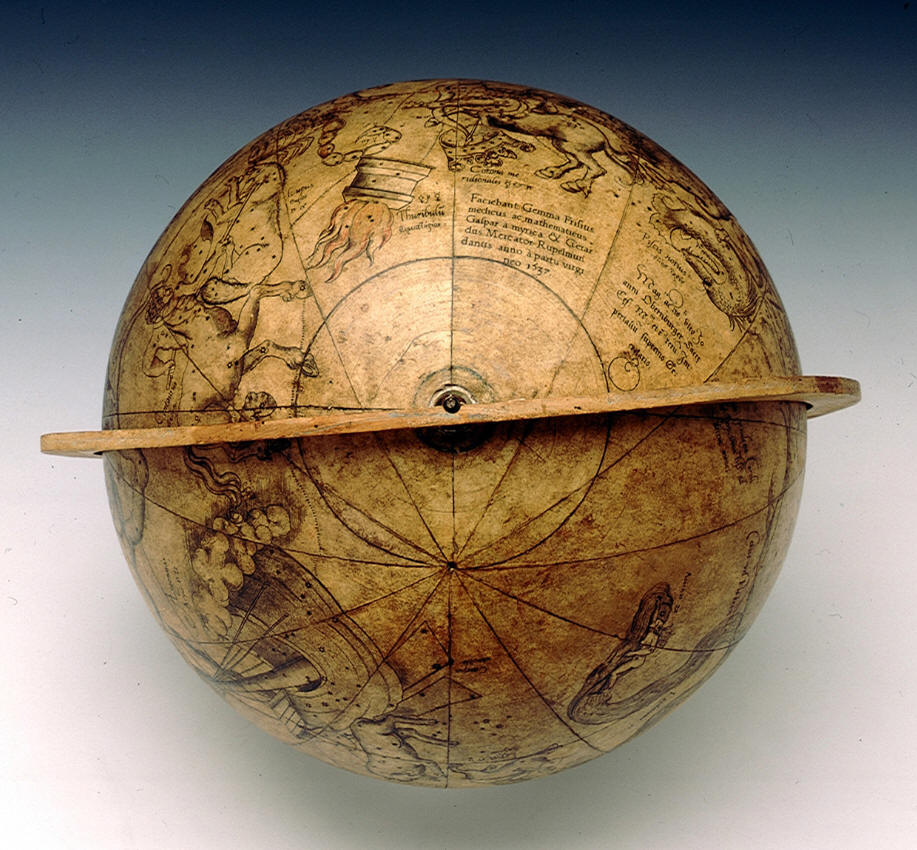
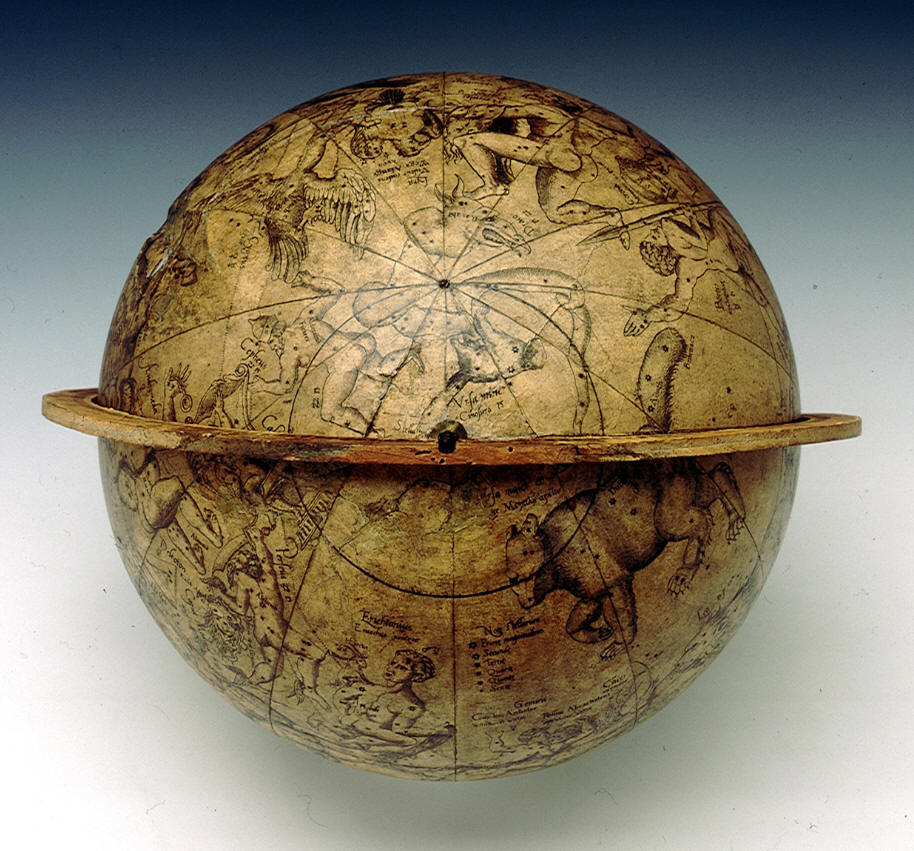
Il globo celeste manoscritto del 1532 di Caspar Vopel è descritto anche nella seguente pagina di Astronomie in Nürnberg:


https://www.astronomie-nuernberg.de/index.php?category=duerer&page=vopel-1532
https://www.astronomie-nuernberg.de/index.php?category=duerer&page=sternkarten
https://www.astronomie-nuernberg.de/index.php?category=duerer&page=nachfolger
CONFRONTA CON
Manoscritto di Vienna (1440 circa)
Planisferi di Conrad Heinfogel (?)
Die Karte des Nördlichen Sternenhimmels, Inv.-Nr. Hz 5576
Die Karte des Südlichen Sternenhimmels, Inv.-Nr. Hz 5577
Petrus Apianus
Astronomicum Caesareum, Ingolstadt 1540
Affreschi di Palazzo Besta a Teglio (1550 circa)
e con i
Confronta con le costellazioni di Rusconi
in
Della architettura di Gio. Antonio Rusconi, con centossanta figure dissegnate dal medesimo, secondo i precetti di Vitruvio, Venezia, 1590
Sopra l'origine delle costellazioni australi leggi il seguente articolo di
Per cortesia di

e di Hans Gaab autore di
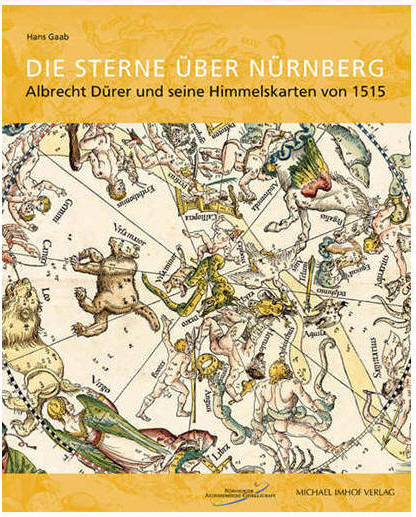
esamina nelle seguenti pagine le influenze delle tavole del Dürer sulla produzione cartografica celeste successiva
e le carte che hanno influito sulla sua produzione
Von Dürer beeinflusste Himmelskarten
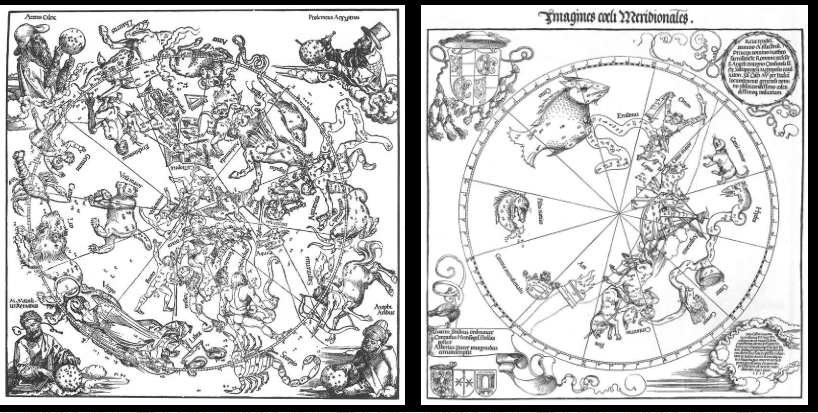
https://www.astronomie-nuernberg.de/index.php?category=duerer&page=sternkarten
https://www.astronomie-nuernberg.de/index.php?category=duerer&page=nachfolger
Altri lavori di Vopel in Atlascoelestis:
Gaius Iulius Hyginus
C. Ivlii Higini, Avgvsti Liberti, Poeticon Astronomicon : Ad Vetervm exemplarium eorumq[ue] manuscriptorum fidem diligentissime recognitum, & ab innumeris, quibus scatebat, uitiis repurgatum, Coloniae 1534
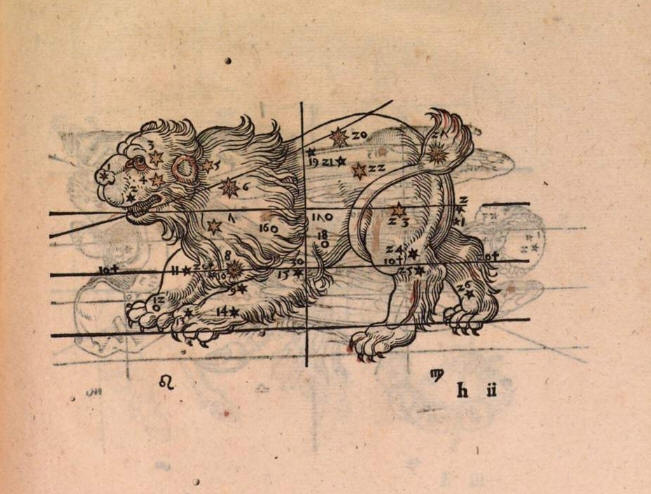
http://www.atlascoelestis.com/Hyginusvopel%201534.htm
SPHAERA / ASTRONOMICA / aeri exarata, sicut / eam olim exhibuit Cas/par Vopelius Cosmogr.
quasi copia di
Caspar Vopel, Caspar. VO / PEL. MEDEBACH / HANC. COSMOGRA: / sphæram faciebat. / Coloniae. UN. 1536

http://www.atlascoelestis.com/Anonimo%20vopel%201536%20base.htm
di FELICE STOPPA
AGOSTO 2019
